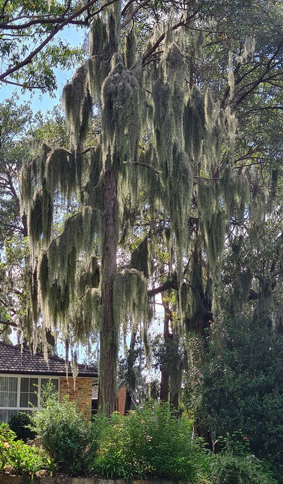Spanish moss
An environmental weed
In the early 2020s STEP became increasingly concerned about the potential impact of Spanish moss on our bushland and so we asked members to send us details of any Spanish moss growing on trees. In November 2024 we published the results of our findings in a booklet entitled Spanish Moss (Tillandsia usneoides): An Environmental Weed. A Preliminary Assessment in Northern Sydney.
We concluded that Spanish moss must be treated as a serious environmental weed otherwise turpentines, lilly pillys and other rainforest trees will turn into grey curtains of swaying Spanish moss. Local plant communities that are likely to be infected include the critically endangered Sydney Turpentine-Ironbark Forest, Blue Gum High Forest and Sydney Enriched Sandstone Moist Forest.
Threats to ecosystems include causing the death of individual trees by reducing photosynthesis but also include subtle effects such as altered water and nutrient cycles, changed predator prey interactions, habitat alteration, moderation of the microclimate and transformed fire regimes. Changes such as these are one of the greatest conservation threats to biodiversity in Australia.
Spanish moss will be expensive and difficult to control as most of it is out of easy reach. The sooner gardeners, park and natural area managers commence a coordinated program of removal the cheaper and more effective it will be.

